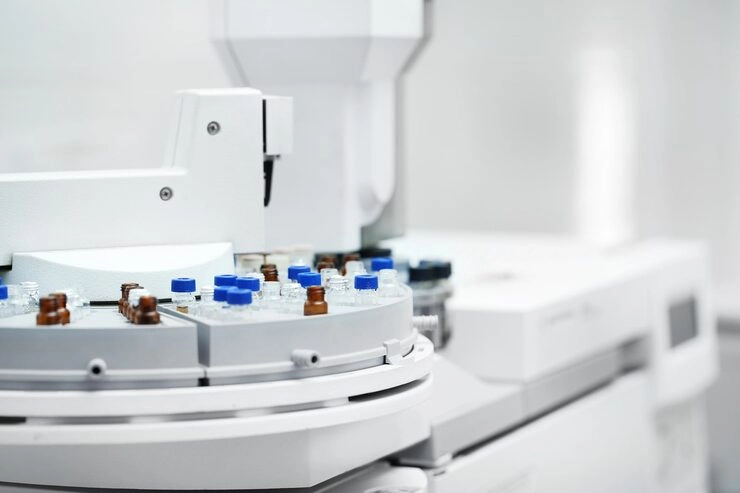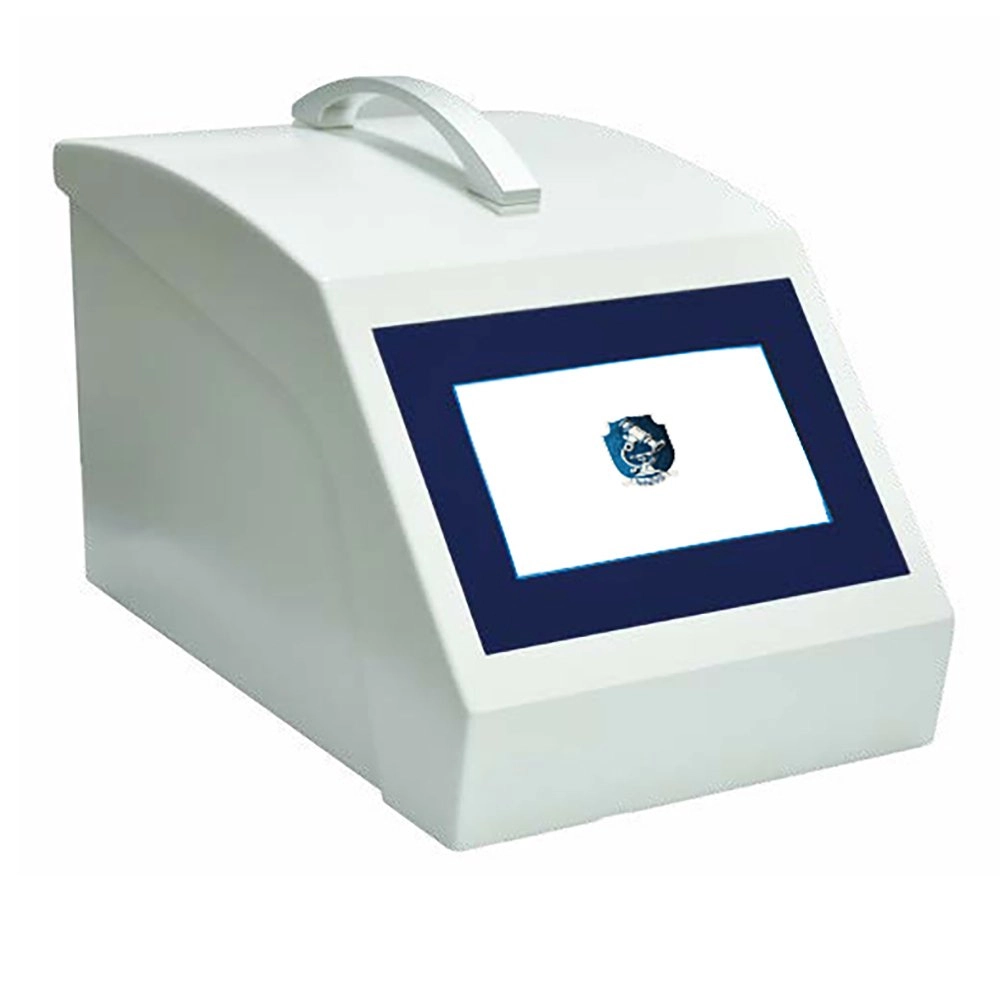Beyond the Bubble Point: How Modern Filter Integrity Testers Are Changing Pharma QC
Beyond the Bubble Point: How Modern Filter Integrity Testers Are Changing Pharma QC

In the pharmaceutical business, keeping products sterile and safe is a top priority. A key part of making sure quality is high is filter integrity testing. The bubble point filter integrity test is a very common type. The field is always evolving. New rules are strict, and technology is always improving. As a result, modern filter integrity testers are completely changing the game for quality control (QC) teams. This article will look at the important job these tools do. We’ll also see how they’ve grown past the old ways of doing things. Plus, we’ll see how companies like MedIntegrity are paving the way.
The Role of Filter Integrity Testing in Pharmaceutical Quality Control
Filter integrity testing is a basic part of making sterile medicines. It makes sure that the filters used in the factory are not damaged. This way, they can stop germs from getting into the product.
Filter integrity testers, which are also called filter element integrity testers, use testing methods that are accepted all over the world. They are very important for checking and approving the filters used for liquids and gases in the pharmaceutical world. So that sterile filtration is not compromised, these tests are performed. This protects the medicine’s effectiveness and keeps patients safe.
Groups like the FDA and EMA require very strict quality control steps. Rules from the US Food and medicine Administration (FDA) and China’s Good Manufacturing Practice (GMP) say these integrity tests have to be done. This is to make sure medicines are safe and of high quality. Following these rules is a must. It is necessary for getting a product on the market and for keeping the public’s trust.
The most popular integrity tests are used to check how well filters work. These include the bubble point, diffusion flow, pressure hold, and water intrusion tests. Among these, the bubble point filter integrity test is still used a lot. This is because it is a simple way to find holes that are too big in the filter.
Limitations of Traditional Bubble Point Testing
Even though it’s used often, the old way of doing bubble point testing has some problems. These issues can make the results less reliable.
Operator-Dependent Variability
Doing these tests by hand takes a trained worker. This person has to read the results with their eyes or on an analog device. This process opens the door to human mistakes. For example, an operator might misread a pressure gauge or get the timing wrong. These simple errors can lead to results that are wrong, showing a problem where there isn’t one, or vice-versa.
Inconsistent Reproducibility
Getting the same result every time is vital for releasing a batch of product or for audits. Unfortunately, manual methods aren’t always consistent. The results can change a lot depending on who is doing the test or what the room conditions are like.
Compliance Risks
Using paper records makes it tough to keep track of documents in a way that meets 21 CFR Part 11 rules for electronic records. Organizations that don’t have automatic logging systems might get in trouble during inspections. This is a big risk.
Technological Advancements in Modern Filter Integrity Testers
New filter integrity testers fix these problems by using digital tools and automation. They are a big step up.
High-Precision Sensors
Newer testers use very accurate sensors. What’s more, these sensors get rid of the guesswork. They can spot tiny changes in pressure with amazing detail. This makes sure that things like the bubble point pressure are measured correctly.
Automated Test Sequences and Data Integrity
Automated systems make the whole process smoother. They also help companies follow the rules for data integrity. The technology for integrity testing is always getting better. This has made filter integrity testers more accurate and efficient. Besides, electronic records mean fewer typing mistakes and safe audit trails, which are needed for GMP validation.
Multi-Test Functionality
Advanced machines now do more than one type of test. They can measure diffusion flow and test for water intrusion right alongside the bubble point test. This flexibility means they can be used for many different kinds of filtration systems.
Features Transforming Modern Filter Integrity Testers
Modern machines have smart features. These features make them easier to use and help them meet the official rules.
Secure User Access and E-Signatures
The FDA’s 21 CFR Part 11 rule requires safe user logins and electronic signatures. With these systems, QC teams can give different people different levels of access. It also keeps a record of who did what, which makes everyone accountable.
Intuitive User Interfaces
The touchscreens are easy to use. They guide people through test steps that are already set up for certain types of membranes or setups. This is a huge help. It means less time spent on training and more work getting done.
Real-Time Data Logging and Export
These testers can save information as it’s being collected. You can export the data right away using a USB drive or a network connection. Old records can be pulled up in a second for reviews or during inspections. This openness helps everyone see what’s going on.
Benefits to Pharmaceutical Quality Control Teams
These new developments offer real benefits to the daily work of pharmaceutical QC teams.
Increased Efficiency and Throughput
Automation means less hands-on work. This frees up technicians to do more important jobs and cuts down on how long testing takes. The result is that the factory can produce more. It’s a direct boost to productivity.
Enhanced Compliance and Audit Readiness
Companies are now ready for inspections at any time. This is because they have stopped using handwritten logs and now use secure digital records. What a major plus during surprise visits from regulators or when sending in documents.
Versatility Across Applications
Modern testers can handle a lot of different cartridge sizes. They work for small membranes in the lab and for big filters on the production line. This makes them useful for both R&D labs and full-size manufacturing.
Application Scenarios in Pharmaceutical Manufacturing Environments
The flexibility of modern filter integrity testers means they can be used in many different places in a pharmaceutical facility.
Symmetric vs. Asymmetric Membrane Testing
Different filter materials need different test settings. Smart programming allows the machine to change its settings automatically. It adjusts based on whether it is testing symmetric or asymmetric membranes, so the result is always as accurate as possible.
Compatibility with Complex Geometries
Advanced machines can also handle tricky shapes. For instance, they can work with ultrafiltration columns or capsule filters, which are often used when making biologics. Old methods often don’t work with these designs.
In-Process vs. Final Batch Release Testing
These modern testers fit right into how a company already works. They can be used right on the production line as things are running or used separately for testing a batch before it’s released. This gives companies options without sacrificing quality or breaking any rules.
MedIntegrity: A Reliable Partner for Filter Integrity Testing Solutions
Sự toàn vẹn của y khoa is a well-known company you can trust. It offers advanced tools made just for the needs of pharmaceutical QC.
MedIntegrity of the U.S.A. is a business that concentrates on precise testing tools and the items that go with them in the medicine industry. We are a helpful partner. We always provide clients with different answers for their testing steps, problem-solving, and lab work.
These filter integrity tester models are great examples of new ideas. They have features like smart touchscreens and the ability to do multiple kinds of tests, including bubble point filter integrity test modes. They also support scientific e-signatures and can export records as they are made. First of all, they are built to work well under GMP conditions.

The testing methods meet the rules of the FDA and GMP, as well as the standards of the USP and EP. Furthermore, our products are sold in over 40 countries. This shows that people all over the world trust MedIntegrity’s focus on new ideas that follow the rules, with helpful service teams ready to support them everywhere.
Summary of Key Insights from Modern Filter Integrity Testing Evolution
Modern filter integrity testers are now much more than just simple manual tools that only measure bubble points. They have become complete digital systems. They are built for accuracy, for being ready to meet regulations, and for making work run better. They are also flexible enough for the changing world of medicine manufacturing. Companies such as MedIntegrity show this change well. They provide forward-thinking instruments that meet worldwide rules and support growth for biologic and medicine companies everywhere.
FAQs:
Q1: What is a bubble point filter integrity test?
A: The bubble point test figures out the lowest pressure needed to push air through the biggest hole in a wet filter. It helps check if a sterilizing-grade filter is still in good shape after being used or before it’s put into a sterile process. This is a very important step that agencies like the FDA require for checking sterile medicine production.
Q2: Are modern filter integrity testers compatible with all types of filters?
A: Yes. Most advanced systems are made to be very flexible. They can do multiple types of tests, which lets them work with symmetric/asymmetric membranes and also with ultrafiltration columns or capsule-type filters. This makes them useful in many different pharmaceutical situations, from research labs to big commercial production lines.
Q3: How do electronic signatures improve regulatory compliance?
A: Electronic signatures provide a safe way to check a user’s identity, which is in line with 21 CFR Part 11 rules. They create clear audit trails that show who did which test and under what circumstances. This gets rid of any confusion and makes people more responsible during internal check-ups or official audits by groups like the FDA or EMA.








